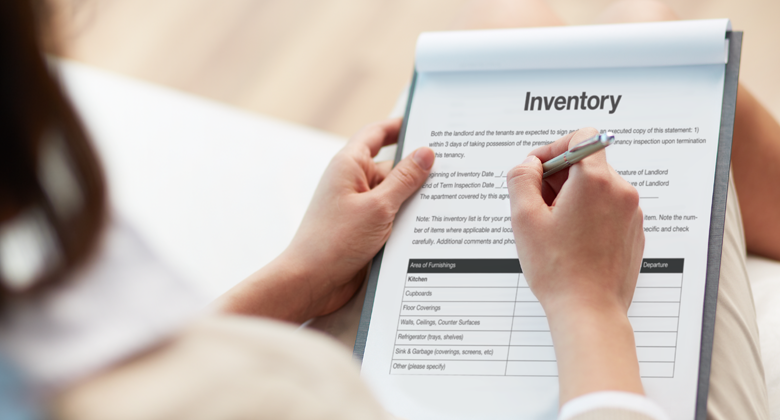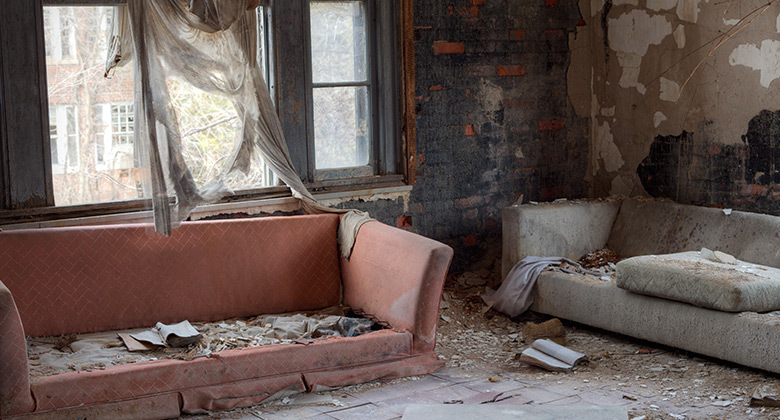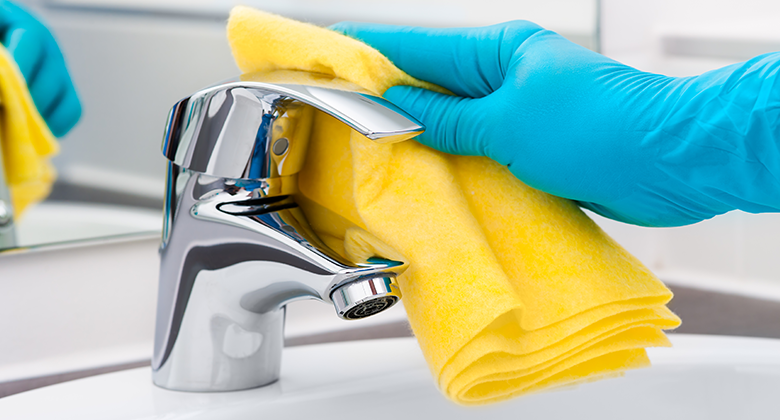Landlord Guide to Property Inventories
You may like the sound of saving a few hundred pounds on an inventory inspection, but it could end up costing you a lot more if you don't. Inventories are imperative when it comes to protecting your property.

What is an inventory?
Let’s start with the basics, an inventory details everything that’s included in the property including white goods, furniture and fixtures and fitting. It will also detail the condition of these items as well as any scuffs or marks to flooring, walls etc. A professional inventory will include high resolution images of each room and any defects found plus detailed written descriptions. The cleanliness of the property will also be observed in each room and recorded such as ‘cleaned to professional standard’ or ‘cleaned to a good domestic standard’. There are four essential parts of a full tenancy inventory:
- The Make
This is the creation of the inventory detailing every aspect of the property. Each room will be checked for its condition, noting any marks or damage and the general cleanliness. You can do this yourself, but we’d recommend hiring a professional third party inventory company as a good inventory clerk might spot defects you hadn’t noticed, such as a missing radiator valve or wobbly door handle. The inventory will include any outside space such as a balcony or garden. This is important, especially if you’re expecting the tenant to maintain these.
- The Check-in
Now a schedule of condition can be created, which is a document that will state the condition of each room and any defects noted. If you are short of time, this can be done at the same time as the inventory make itself. It’s also cheaper if you book the inventory make and a check-in together. You should get the tenant to sign a copy of the check-in report to confirm they accept it’s accurate, but if this isn’t practical you should tell them, in writing, to let you know of any discrepancies within seven days of the start of the tenancy.
- The Check-out
When the tenant moves out, you should arrange for a separate check-out report, then you compare the two reports to see what, if anything, to deduct from their deposit. You should invite the tenant to be present when the clerk compiles the check-out report, however it isn’t essential for them to be there as you can ask the clerk to send both you and the tenant a copy. One of the advantages of using an independent inventory clerk is that they will mark on the check-out report whether any deterioration is beyond normal wear and tear and whether they consider any damage or deterioration to be the landlord’s or the tenant’s responsibility. This should make it easier to decide if deductions need to be taken from the deposit.
- Interim inspections
Something that can be neglected as part of the inventory is regular inspections. An inspection every quarter or bi-annually will allow you, or a clerk, to check if there is any damage or deterioration beyond fair wear and tear. You can then highlight to the tenants that you expect damage to be put right before they move out, or you may need to make deductions from the deposit. It can also highlight any issues in the property, not caused by the tenants, that they’ve failed to report- this will allow you to rectify the issue before it causes damage. Make sure to give a full 24 hours written notice to your tenants before entering the property for inspections- they have the right of quiet enjoyment, which means you cannot enter without their express consent.

Why do I need an inventory?
This is a quick answer- the deposit. If you’ve taken a deposit for a tenancy, but don’t carry out an inventory, you’ve got absolute no evidence of any damage that’s been caused. Someone living in your property can cause damage in lots of different ways: it may not always be malicious, but carelessness or misuse could mean a big repair bill for you, unless you can prove the tenants caused the damage.
If you try to deduct any money from a tenant’s deposit for cleaning or damage, they can go to the Tenancy Deposit Scheme to dispute it. A scheme adjudicator will ask you for evidence, so if you don’t have an inventory, they can’t award you anything. As with most legislation, the burden of proof will always be on the landlord.

Even if a tenant doesn’t dispute a deduction to a deposit scheme, a professional inventory could help avoid disputes straight off the bat. If you can show the tenant the state of the property before they moved in, it will be clear where any fault lies when it comes to damages.
You might be tempted to save on a professional inventory, but an independent skilled inventory clerk will know exactly what to look for and how to record it. It can also be helpful when it comes to that most disputed of terms: ‘fair wear and tear’. Often this can be misinterpreted by both sides, whereas a professional clerk will have seen many homes and understand the clear distinction.
Tenants have also come to expect an inventory when they move into a new home: as much as an inventory protects you, it also protects them from unscrupulous claims of damage. It may also help you set out expectations at the start of the tenancy, if you can clearly define how the property was presented when they moved in.
Don’t skip this essential paperwork but if you decide to then you should probably reconsider taking a deposit, as you won’t be protected if it comes to a dispute. You could also prepare an inventory yourself, but you’ll save yourself time and hassle, and gain peace of mind, from a professional third-party doing it for you.
What is fair wear and tear?
The House of Lords defines fair wear and tear as, ‘Reasonable use of the premises by the tenant and the ordinary operation of natural forces’- still fairly ambiguous! Essentially, fair wear and tear is minor scuffs and marks in a property that most likely would have occurred if you were living there as a homeowner. It’s the natural depreciation of a property that cannot be classed as intentional damage or misuse of a property by the occupants. If you’re thinking that sounds vague- you’d be right.
How can you prove minor damage is more than just fair wear and tear? You need a well-constructed inventory check-in and check-out report. This will detail the property condition before the tenants move in and when they’ve left- giving you vital evidence to show changes in the property’s condition. Take note of this, as TDS data from 2017 showed that more than 50% of disputes with no inventory evidence resulted in a 100% return of the deposit to tenant- regardless if there was damage above fair wear and tear.
Cleaning and damage are the most commonly misinterpreted as fair wear and tear, with cleaning disputes accounting for 57% of cases and damage as 51%. And with 46% of tenants raising deposit disputes themselves, it’s important you outline the differentiation between fair wear and tear or damage and inadequate cleaning from the outset. Ensure tenants sign an inventory check-in and detail your expectations in terms of property upkeep and how the property should be returned. Insisting on a professional clean when they leave could avoid disputes over cleaning and make it clearer to identify fair wear and tear as opposed to actual damage.

It’s also important to note that the level of wear and tear will vary depending on the type of occupants. For example, a professional couple will produce less wear and tear in the property as they’ll likely spend more time away from the property when working. Compare this to a family with young children spending more time at home and the wear will increase. Always take this into consideration when renting as fair wear and tear is to be expected and accounted for in your buy-to-let maintenance costs.
Landlords should also be aware that when making deductions from a deposit that they cannot benefit from betterment i.e. the property will not be improved at the tenant’s expense. You can’t expect them to pay the full replacement cost of an item, only a proportion based on the price, the age and how long it was likely to last anyway.
For example, if the tenants burned a large hole in a year-old sofa that cost £500, which you would have not needed to replace for a further four years, it would be reasonable to charge them £450 towards the cost of a new one. However, if the sofa was four years old, you should only charge them £50. Keep receipts of everything you buy. That said, where it is possible and cheaper to repair rather than replace an item, you can only expect the tenant to pay the cost of the repair.

Upad’s Top Tips on Inventories
- Always get an inventory carried out for every new tenancy
- Don’t take a deposit if you aren’t getting an inventory- you won’t be able to make deductions if you can’t prove any damage with evidence
- Use an independent professional third party inventory clerk for a water-tight inventory
- Avoid tenant disputes by setting out expectations at the beginning of the tenancy
- Be clear on fair wear and tear
- If you professional clean the property before tenants move in, make sure you clarify that the tenants must professionally clean the property upon leaving
- Ensure you obtain a signature from your tenants that they have read and agreed to the inventory to avoid later disputes












